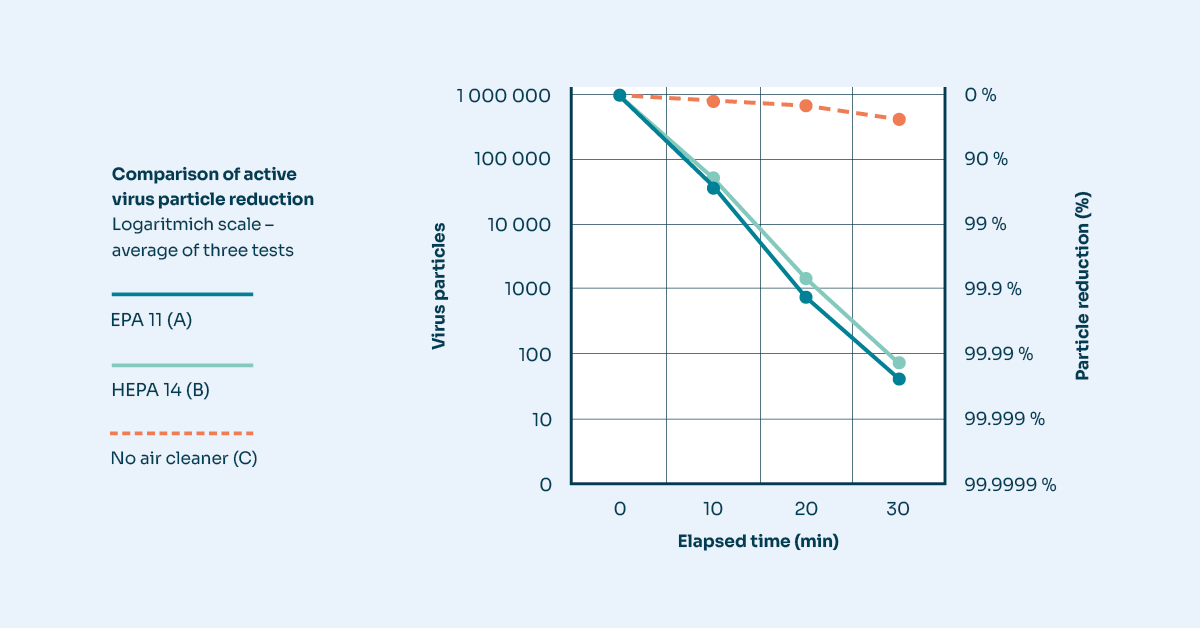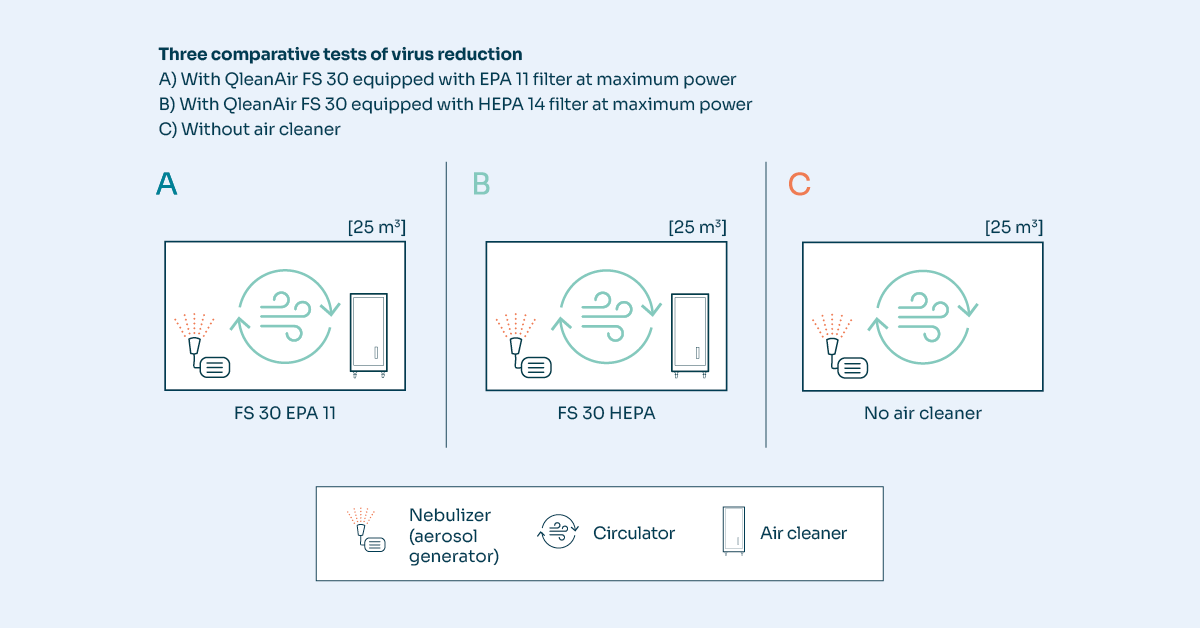
Virus-free air in 10 minutes – is it possible?
A joint study with Sendai Medical Center in Japan
Therefore, we performed a joint study with Virus Research Center, Clinical Research Division at Sendai Medical Center, in Japan. The study was conducted using our mobile air cleaner QleanAir FS 30 with two different filters settings, HEPA 14 and EPA 11, on active influenza virus in a closed space of 25 m3. The results show clearly that the air cleaners significantly improve the air quality in very short time.
- In 10 minutes, the QleanAir FS 30 had removed over 95% of the airborne virus particles from the air in the room, regardless of filter. It is outstanding when compared with the reduction rate requirement from the German engineer organization VDI: 90 % in 30 minutes in a 30 m3 room. Without air cleaner, the particle reduction was only 16,9%.
- After twenty minutes, approximately 99.9% of the airborne particles in the space was removed by both versions of the QleanAir FS 30. Without air cleaner, the particle reduction was only 34,2%.
- After 30 minutes, both versions of the air cleaner had removed over 99,99% of the particles. Without air cleaner, the particle reduction was only 57,2%.
- The study also compared the difference between the FS 30 equipped with different filters, HEPA 14 and EPA 11. The results show that both filter combinations are highly effective. The FS 30 equipped with the EPA 11 filter reached 99,9% and 99,99% reduction slightly faster because of its higher air flow.
«This study gives us additional scientific evidence to demonstrate the high quality of our technology, the effectiveness of our air cleaners and the benefits of our air cleaners that we can offer our customers with confidence. We are going to continue to provide clean air in the sensitive environments, such as offices, hospitals, schools, and hotels«, says Sebastian Lindstedt, CEO of QleanAir.
Comparison of active virus particle reduction

How the study was performed
It was a joint study conducted by QleanAir Japan and the Virus Research Center, Clinical Research Division, Sendai Medical Center in Japan. The study aimed to investigate how quickly an air cleaner would clean the air from the airborne viruses.
The tests were performed in a closed bio-safety chamber of a 25 m3. The fluid with active influenza viruses of almost the same size as SARS-CoV-2, the causative agent of COVID-19, was atomized in the chamber using an electric nebulizer (aerosol generator), and an electric air circulator. A mobile air cleaner, QleanAir FS 30, was placed in the room, equipped with either of two different filters, HEPA 14 or EPA 11, and operated at maximum power. Thereafter, reduction of the concentration of airborne particles and active viruses in the chamber were measured for three different settings, as illustrated below as A), B), and C), at the time points of 10, 20 and 30 minutes from the start of the air cleaning. The results show an average of three tests.
Three comparative tests of virus reduction

About the filters
HEPA 14 and EPA 11 filters are specified in the European standards EN 1822. High-Efficiency Particulate Air (HEPA) 14 filters capture more than 99.995% of Maximum Permeable Particle Size (MPPS) particles, and Efficient Particulate Air (EPA) 11 filters capture at least 95% of MPPS particles.
Reference
Hidekazu NISHIMURA, Seiji OHNO: Comparison of airborne virus reduction efficiencies between air purifiers with HEPA and EPA filters, Earozoru Kenkyu, 37, 1-7 (2022) doi: 10.11203/jar.37. (in Japanese)



